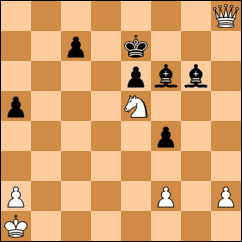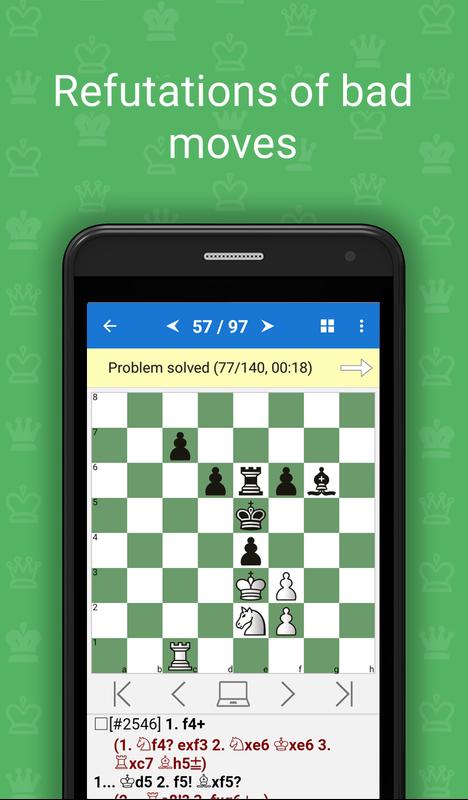One of the biggest advantages of the “Similar Endgame” function is that we realise how the position that we are looking for arose in the game. This is very useful as it gives us a logical link to the endgame and how it was reached. This helps us to improve our endgame technique.
After solving the Kasparian study and working on these six practical positions I am sure that you are never really going to forget this ending! Even if someone woke you up in the middle of the night you would be able to accurately tell them the secrets of this endgame! And it is precisely for this reason I think that the “Similar Endgame” function in ChessBase 13 is one of the best ways to learn endgames for a tournament player.
| Advertising |
Books, boards, sets: Chess Niggemann |
Discussion and Feedback Join the public discussion or submit your feedback to the editors
8/2/2019 – American Chess Magazine is living up to its slogan 'Celebrating The Resurgence Of US Chess' with an issue largely dedicated to Bobby Fischer's legacy including exclusive testimonials and interviews with Dr. Frank Brady, GM Borislav Ivkov, and Lou Hays, plus feature articles on Fischer's opening, middlegame and endgame exploits. There's also an extensive interview with ChessBase co-founder and lead programmer Matthias Wüllenweber.
3/19/2018 – The new Endgame Turbo 5 offers reliable information to assess all 3-, 4-, and 5-piece endgames, plus 143 of the most important 6-piece endgames. The new turbo in Syzygy format is delivered on an USB stick and can also be used from this stick.
In 60 minutes you will get a crash course how to play such a complicated opening like the Sicilian Najdorf by the hands of GM van Wely who knows by experience how the dangers look like!The contents: Video 1, 2, 3: how to survive versus whites most aggressive approach: 6. Bc4, 6. Be3 and 6 Bg5. Video 4: how to deal with the latest fashion in the Najdorf 6. h3 and last but not least Video 5: how to play vs the more classical set ups 6. Be2 and 6. g3
Discuss
LAMIB 3/7/2015 08:55
Brilliant endgame study! To see that even IMs and GMs are not completely aware of the intricacies of such endings is very surprising. This just shows how studying endgames can improve the overall strength of a chess player. Endgames unlike Openings do not change with fashion and once they are mastered even average players can have the confidence that they know something that a GM doesn't know. Very nice article.
1
< Chess | The Endgame
Note: this section is not yet finished. Answers and diagrams may be missing or incomplete. If you can help expand this module, please jump right in and edit!
Leonid Kubbel's Chess Endgame Studies Pdf
This section contains several positions similar to those discussed in previous subsections of the Endgame module. They are designed to test your endgame skills by using practical situations you might encounter in a real game. Novices should read the 'Easy' section, while more advanced players can go to 'Intermediate or 'Advanced' for more of a challenge. (Some of the 'Intermediate' and 'Advanced' puzzles come with an answer key, while in others the solution is worked into the commentary.)
- 1Easy
Easy[edit]

Study 1: King and Pawn vs King[edit]
| a | b | c | d | e | f | g | h |
| 8 | 8 | ||||||
| 7 | 7 | ||||||
| 6 | 6 | ||||||
| 5 | 5 | ||||||
| 4 | 4 | ||||||
| 3 | 3 | ||||||
| 2 | 2 | ||||||
| 1 | 1 | ||||||
| a | b | c | d | e | f | g | h |
Diagram 1 White to move. Can he make a queen from his pawn and win the game?
In this position (Diagram 1) who is winning? Or assuming correct play by both players what will be the result of the game? Before answering, look at Diagram 2.
| a | b | c | d | e | f | g | h |
| 8 | 8 | ||||||
| 7 | 7 | ||||||
| 6 | 6 | ||||||
| 5 | 5 | ||||||
| 4 | 4 | ||||||
| 3 | 3 | ||||||
| 2 | 2 | ||||||
| 1 | 1 | ||||||
| a | b | c | d | e | f | g | h |
Diagram 2: With either side to move, white cannot evict the black king from a8 and b8, two squares that white needs control of to safely queen his pawn. As such, this game is drawn.
In diagram 2, white has a clear plan, promote his pawn to a queen, however black can stop that. White cannot immediately push his pawn. In diagram 2 if white pushes his pawn with a7+ black can play Ka8 and the game is drawn. If the black king is on a8 instead of b8, then a7 will also be a stalemate. So white must dislodge the black king from the a8 and b8 squares. White can't do that, because no matter what white does, the king black can simply move back and forth between a8 and b8 therefore the game is drawn.
A lot of times you will be offered a trade of material that results in an end game, or you may want to figure out if its best for you to offer a trade to enter the end game. You may play a game of chess and in doing so do a long calculation where diagram 1 is as far as you can calculate. In which case you do not need to do anymore calculations because you already know that it's a draw!
By understanding the outcome of positions without needing to calculate all the different variations, you can make accurate evaluations of trades that may be decisive. There are several details that must be kept in mind for this position drawn. White cannot have any other pawns, if he does then black is lost. Also, the black king must be able to get to the corner for the board, if possible the white king will shield the black king away and white will win.
Intermediate[edit]
| a | b | c | d | e | f | g | h |
| 8 | 8 | ||||||
| 7 | 7 | ||||||
| 6 | 6 | ||||||
| 5 | 5 | ||||||
| 4 | 4 | ||||||
| 3 | 3 | ||||||
| 2 | 2 | ||||||
| 1 | 1 | ||||||
| a | b | c | d | e | f | g | h |
Diagram 4: White to move. It looks like black will queen his pawn and win the game. Can white salvage a draw?
Diagram 4 is a famous position by the famous puzzle composer Selivanov. At first glance it appears that white is lost. His king is outside the 'square' of the black pawn and his bishop cannot attack the queening square of the pawn. However, white has a very unintuitive move that saves the day. It requires you to visualise ahead two moves for both sides. Can you find it? (Roll your mouse between the [answer] tags to see the answer.)
[answer] It is tempting to check right away, but this does not work. 1. Kd2+? Kf4 when white's king cannot reach the pawn and his bishop cannot go to e4 and protect the h1 queening square. For the same reason, 1. Ba2, hoping to play Bd5, does not work either because of .Ke4! blocking the bishop. So the correct solution is 1. Kd3!! and now:
1..h2 results in 2. Kd4+ followed by 3. Be4 when black cannot protect h1 for his pawn.
Any black king move allows white to play either Kd4 or Ke3 as appropriate, followed by Be4. [answer]
Advanced[edit]
Retrieved from 'https://en.wikibooks.org/w/index.php?title=Chess/The_Endgame/Endgame_Studies_and_Puzzles&oldid=2412280'

